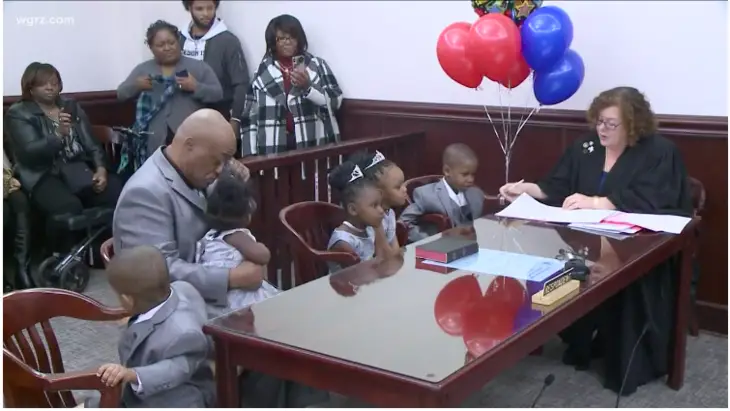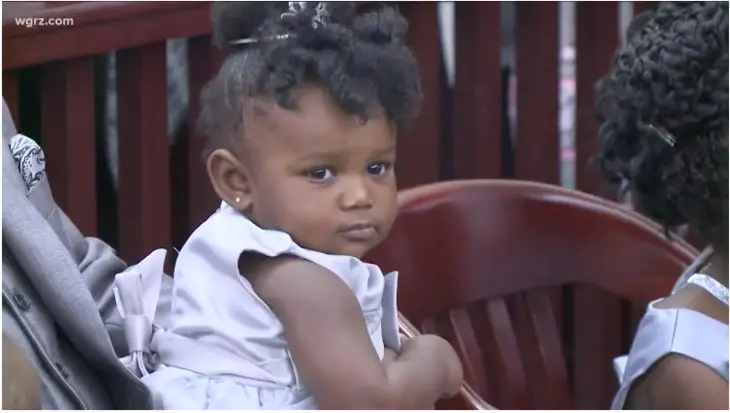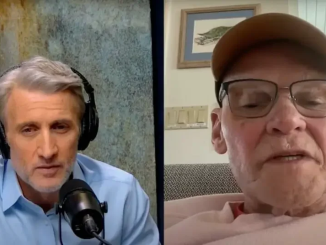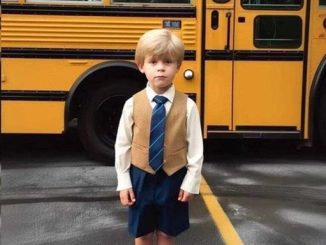Being a foster parent means making a change in a child’s life. These people are compassionate and caring and always ready to open their hearts and homes to minors in need of love and kindness.
Lamont Thomas from Buffalo, New York, has devoted the last 20 years of his life fostering children. Speaking to Good Morning America of the time he welcomed the first child, this amazing man says, “In the beginning, I was helping out some friends. They had lost their child to the system. I went on and got certified and became a foster parent. I haven’t stopped since.”
Believe it or not, Lamont has fostered more than 30 kids, five of which he officially adopted. So with his two biological children, Anthony and LaMonica, he became a father of seven.

The first kid Lamont adopted is Michael Thomas. He’s now 27 and recalls the time he became part of the family.
“He was my third foster home and it ended up being my forever home,” Michael said. “He [knew] my biological parents.”
“Lamont never turned [a child] away,” Michael added. “They either aged out or went back home to their own families.”
With seven kids to take care of on his own, Lamont knew he was done adopting, but then he came across a very special case that made him change his mind.

Five siblings aged 5,4,3,2 and 1, who were children of one of Lamont’s foster kids were placed in foster homes themselves. Lamont was sad the kids got to experience their parent’s fate, and his heart tore apart when he learned Zendaya, Jamel, Nakia, Major, and Michaela were separated. Not only they were taken in by four different families, but they were also in four different cities.
Sadly, that meant one thing, that they wouldn’t be raised together.
That’s when Lamont stepped in. He just couldn’t let the siblings spend their childhood without being by each other’s side so he re-certified as a foster parent and adopted all of them.
Some of his older kids had moved from the house already and had families on their own, so Lamont knew he was making the right decision as he could devote all his time to the new addition to the family.
“I was fighting to keep back the tears,” he said of his adoption day with Judge Lisa Rodwin. “Every day I think about it, my eyes swell up. All that we endured to make this happen, it was something.”
This incredible single dad was now a father of 12 children. He knew things wouldn’t be easy, but he was willing to give it a go.
“They bring new energy to me,” Lamont shared. “They’re lovable kids, very affectionate. They deserve to be raised as siblings, and that was my fight.”

An Elderly Woman Left Her Son’s Favorite Pastry at His Grave, Only to Return and Find a Note Saying ‘Thank You’

This story is a touching reminder of how grief and love can shape us, sometimes leading us to places we never expected to find healing. Nancy’s annual pie ritual, which began as a way to remember and honor her son Henry, reveals a profound truth: that love, when shared, has the power to transcend grief.
Nancy’s kindness towards Jimmy highlights how acts of compassion, even in times of pain, can create new connections and bring healing. Her decision to take Jimmy into her home and bake a fresh pie for him symbolizes the continuation of love, not only for her son but for those in need. The way she redirected her motherly love toward this young boy shows us that even the deepest sorrows can lead to new purposes.
Through this unexpected encounter, Nancy begins to feel a renewed sense of purpose, discovering that sharing love can bring fulfillment in ways she hadn’t imagined. This story encourages us to find opportunities to be kind to others, as they might be part of the journey of healing and connection we didn’t know we needed. It’s a reminder that while our loved ones may no longer be with us, their memories can inspire us to do good and spread love.
A story like this can certainly brighten someone’s day and perhaps remind us to look for small ways to be there for others.



Leave a Reply